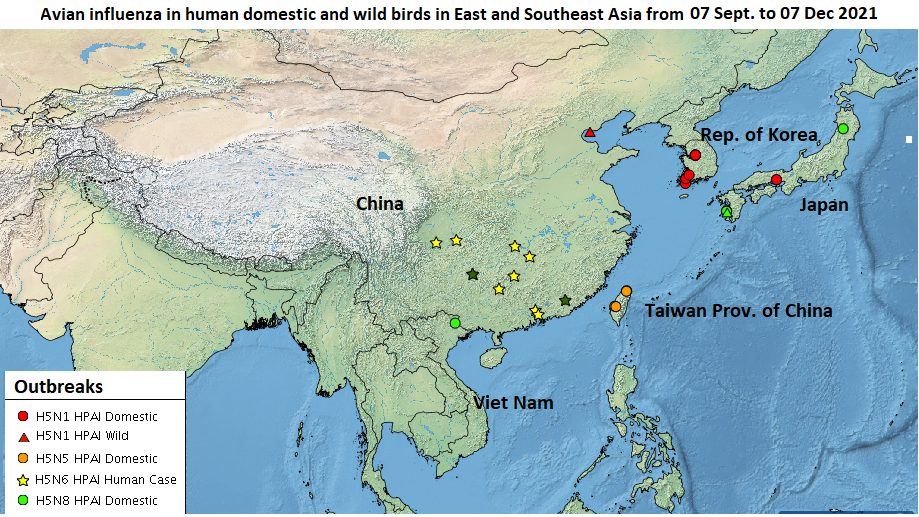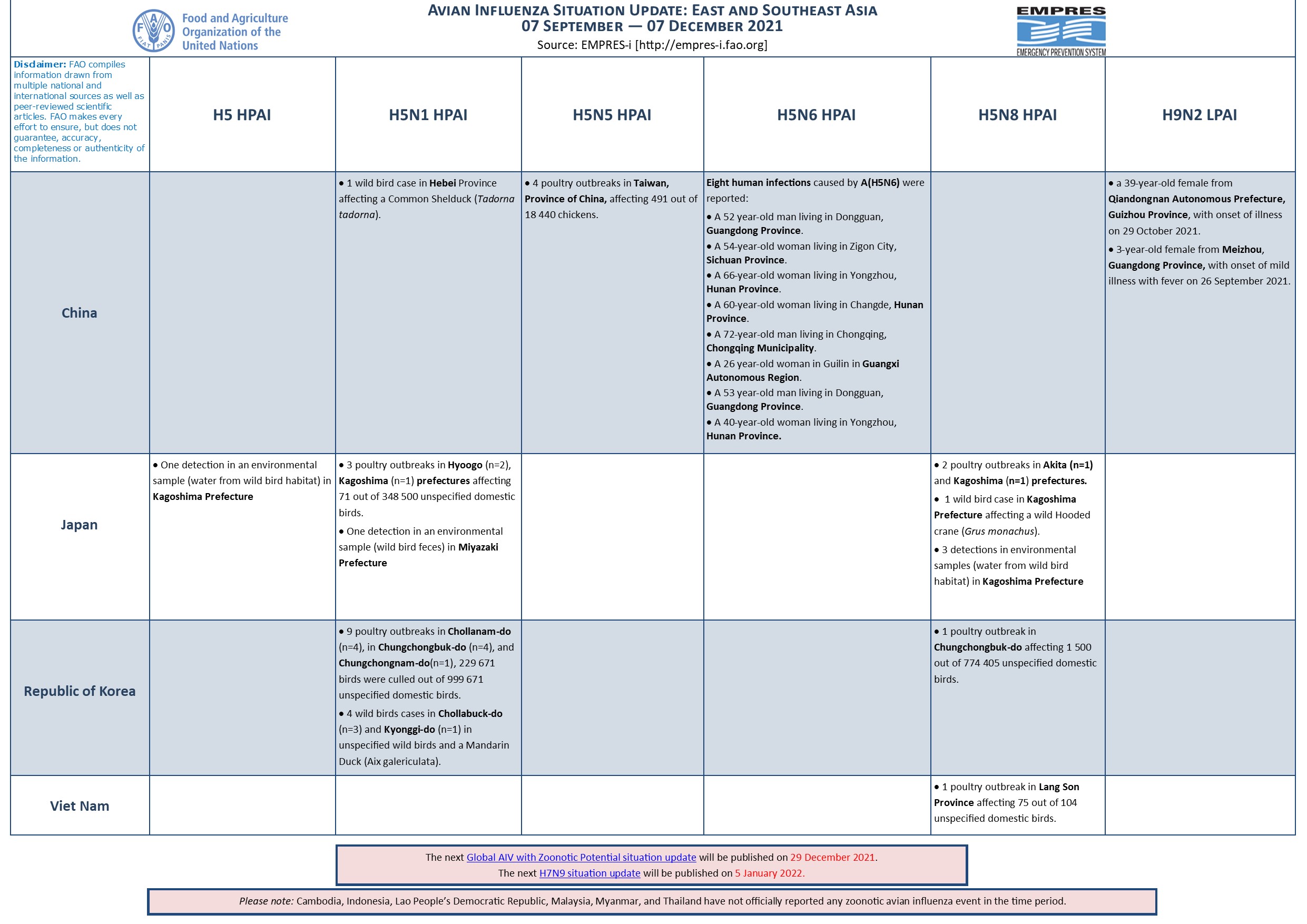FAO/EMPRES-AH is constantly monitoring the avian influenza situation worldwide and compiles information from multiple national and international sources as well as peer-reviewed scientific articles. Close collaboration with country and regional offices, the implementation of avian influenza field surveillance projects, and networks of expertise like OIE/FAO’s OFFLU (www.offlu.org) provide access to timely information on outbreaks, surveillance findings, and genetic similarities of circulating viruses or their virological features. This information is stored in the EMPRES Global Animal Disease Information System (EMPRES-i), a database that can be accessed online at empres-i.fao.org.

Avian Influenza in East and Southeast Asia from 07 September to 07 December 2021 ©EMPRES-I
During the period 7 September to 7 December 2021, four highly pathogenic avian influenza (HPAI) virus subtypes (H5N1, H5N5, H5N6, and H5N8) and one low pathogenic avian influenza (LPAI) virus subtype (H9N2) have been reported in East and South-East Asia. Viet Nam officially reported one H5N8 HPAI outbreak in Lang Son Province, in North Viet Nam, affecting 75 out of 104 unspecified domestic birds. China reported one H5N1 HPAI event in a wild Common Shelduck (Tadorna tadorna) in the Northeastern part of the country. H5 HPAI was reintroduced through wild bird migrations in Japan and the Republic of Korea during October 2021. In Japan, three H5N1 HPAI poultry outbreaks were observed in Hyoogo (n=2) and Kagoshima (n=1) prefectures affecting 71 out of 348 500 unspecified domestic birds while one environmental sample tested positive for the virus in Miyazaki Prefecture. In addition, two H5N8 HPAI poultry outbreaks were reported in Akita (n=1) and in Kagoshima prefectures (n=1), along with one wild bird case affecting a wild Hooded crane (Grus monachus) and three environmental detections in the latter. In the Republic of Korea, H5N1 HPAI virus caused nine poultry outbreaks in Chollanam-do (n=4), Chungchongbuk-do (n=4), and Chungchongnam-do(n=1), affecting 229 671 domestic birds, and four wild bird cases including a Mandarin Duck (Aix galericulata) in Chollabuck-do (n=3) and Kyonggi-do (n=1), while only one H5N8 HPAI poultry outbreak was reported in Chungchongbuk-do. H5N5 HPAI virus is still being reported in Taiwan Province, China and caused at least four poultry outbreaks affecting 491 out of 18 440 chickens.
Furthermore, China reported eight A(H5N6) human infections in Chongqing Municipality (n=1), Guangxi Autonomous Region (n=1), and Guangdong (n=2), Hunan (n=3), and Sichuan (n=1) provinces. A(H5N6) human infections have increased significantly with more than 25 cases reported since January 2021, which corresponds to half of the total of A(H5N6) human infections reported since 2015. All individuals either reported contact with domestic poultry or had visited a live poultry market. In addition, two A(H9N2) human infection were detected in Guangdong (n=1) and Guizhou (n=1) provinces, in a 3 year-old female and a 39 year-old female, respectively.
Highly pathogenic H5N1, H5N2, H5N5, H5N6, and H5N8 viruses have demonstrated the ability to spread via migratory water birds.
We consider avian influenza activity to be highest in the period from December to March, therefore reports of outbreaks in poultry or detections in wild birds and humans are expected to increase over the coming months in the region.





